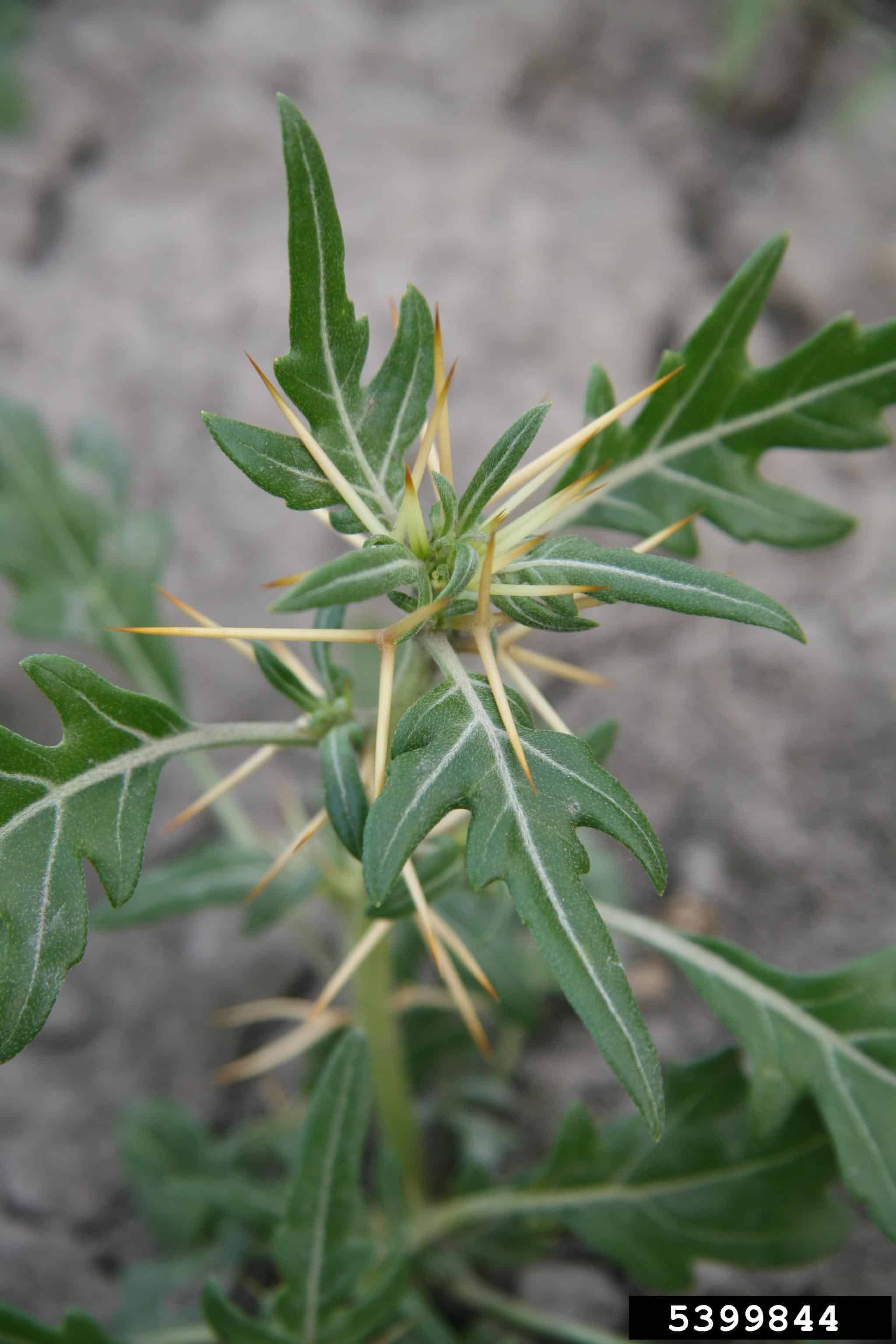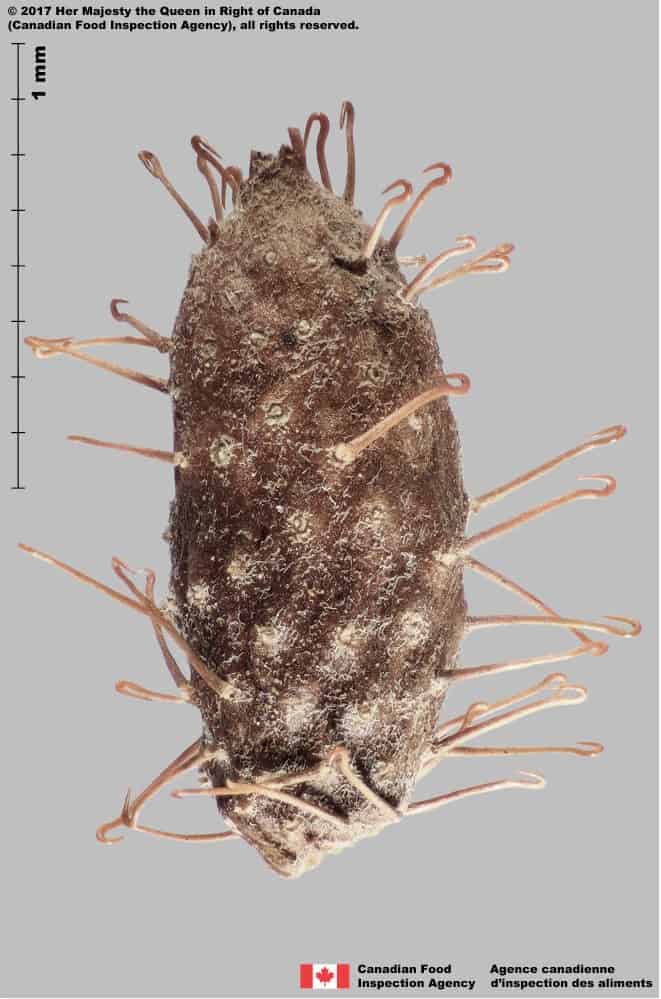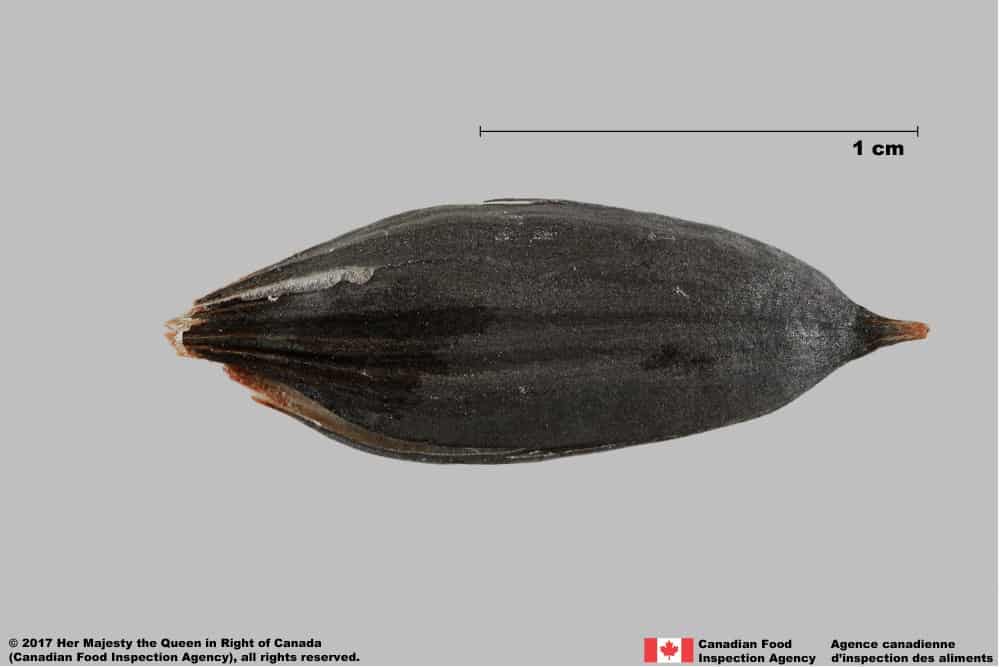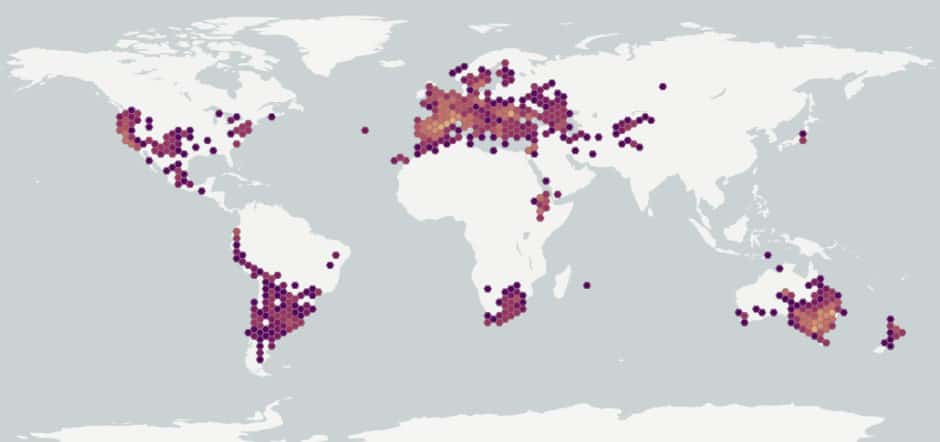Xanthium spinosum
Explore More :
Explore plus :
Overview
Aperçu
Regulation :
Remarques Réglementation:
- Quarantine lists of countries e.g. China *may be updated without notice
Regulation Notes:
On quarantine lists of countries e.g. China*.
*Quarantine lists of countries may be updated without notice.
Distribution :
Répartition :
Spiny cocklebur is native to South America and widely introduced around the world (USDA-ARS 2017). It is widespread in the United States (USDA-NRCS 2017).
Habitat and Crop Association :
Habitat et Cultures Associées :
This species grows in cultivated fields, field margins, abandoned fields, pastures, meadows, shores, ditches and disturbed areas (Darbyshire 2003; CABI 2017; FNA 2017). Usually found in mesic to wet alkaline soils (Darbyshire 2003; FNA 2017).
Economic Use, cultivation area, and Weed Association :
Utilisation économique, zone de culture et association de mauvaises herbes :
Duration of Life Cycle :
Durée du cycle vital:
Annual
Dispersal Unit Type :
Type d’unité de dispersion :
Two-seeded bur
General Information
RENSEIGNEMENTS GÉNÉRAUX
Spiny cocklebur is a serious weed of numerous crops, capable of causing severe yield losses. Its spiny burs attach to clothing and animal fur and also contaminate hay. Additional infestation paths include vehicles, equipment and water. The seeds and seedlings contain hydroquinone, which is toxic to livestock (CABI 2017).
.
Xanthium spinosum plant (Robert Vidéki, Doronicum Kft., Bugwood.org)
Identification
Identification
-
Bur
Size
- Bur length: 10.5 – 17.3 mm (average: 15.0 mm); width: 4.9 – 7.7 mm (average: 6.5 mm)
Shape
- Burs are spindle-shaped
Surface Texture
- Burs have a smooth or sparsely hairy surface; densely covered in thin spines with hooked tips
Colour
- Burs range from light brown to dark brown
Other Features
- Burs have two unequal thick spines at one end, giving the appearance of only one thick spine
- The surface spines have deeply hooked tips that are pinched, giving the appearance of fish-hooks

Spiny cocklebur (Xanthium spinosum) burs



Identification Tips
CONSEILS POUR L’IDENTIFICATION
Additional Botany Information
AUTRES RENSEIGNEMENTS BOTANIQUES
Similar Species
ESPÈCES SEMBLABLES
Similar species are based on a study of seed morphology of various species, and those with similar dispersal units are identified. The study is limited by physical specimen and literature availability at the time of examination, and possibly impacted by the subjectivity of the authors based on their knowledge and experience. Providing similar species information for seed identification is to make users aware of similarities that could possibly result in misidentification.
Xanthium strumarium (cocklebur)
Cocklebur has a number of synonyms, such as: Xanthium americanum, X. canadense, X. chinense, X. italicum, X. orientale, X. sibricum and X. vulgare.
Cocklebur fruit is a similar spindle shape with surface spines and brown colour as spiny cocklebur.
Cocklebur fruits are on average smaller but have a large size variation (length: 4.1 – 24.5 mm; average: 12.1 mm; width: 2.1 – 9.2 mm; average 5.3 mm) hairy surface, two thick spines at one end, and surface spines with shallowly hooked tips compared to spiny cocklebur.
Click to select species
Cliquez pour sélectionner les espèces

Xanthium strumarium
Comparison Window
Fenêtre de comparaison
MAIN SPECIES
ESPÈCES PRINCIPALES
Xanthium spinosum

Xanthium spinosum
Asteraceae
Spiny cocklebur (Xanthium spinosum) burs
MAIN SPECIES
ESPÈCES PRINCIPALES
Xanthium spinosum

Xanthium spinosum
Asteraceae
Spiny cocklebur (Xanthium spinosum) bur
MAIN SPECIES
ESPÈCES PRINCIPALES
Xanthium spinosum

Xanthium spinosum
Asteraceae
Spiny cocklebur (Xanthium spinosum) bur
SIMILAR SPECIES
ESPÈCES SEMBLABLES
Xanthium strumarium

Xanthium strumarium
Asteraceae
Cocklebur (Xanthium strumarium) burs
SIMILAR SPECIES
ESPÈCES SEMBLABLES
Xanthium strumarium

Xanthium strumarium
Asteraceae
Cocklebur (Xanthium strumarium) bur
SIMILAR SPECIES
ESPÈCES SEMBLABLES
Xanthium strumarium

Xanthium strumarium
Asteraceae
Cocklebur (Xanthium strumarium) bur
SIMILAR SPECIES
ESPÈCES SEMBLABLES
Xanthium strumarium

Xanthium strumarium
Asteraceae
Cocklebur (Xanthium strumarium) bur wall partially removed showing one of two achenes
SIMILAR SPECIES
ESPÈCES SEMBLABLES
Xanthium strumarium

Xanthium strumarium
Asteraceae
Cocklebur (Xanthium strumarium) bur and achene; cross-section
SIMILAR SPECIES
ESPÈCES SEMBLABLES
Xanthium strumarium

Xanthium strumarium
Asteraceae
Cocklebur (Xanthium strumarium) achene
Need ID Help?
Besoin d’aide pour l’identification?
Reference(s)
Référence(s)
Centre for Agriculture and Bioscience International (CABI). 2017. Invasive Species Compendium, CAB International, Wallingford, UK. https://www.cabidigitallibrary.org/journal/cabicompendium Accessed April 25, 2017.
Darbyshire, S. J. 2003. Inventory of Canadian Agricultural Weeds. Agriculture and Agri-Food Canada, Research Branch. Ottawa, ON.
Flora of North America (FNA) Editorial Committee, eds. 1993+. Flora of North America North of Mexico [Online]. 22+ vols. New York and Oxford. http://beta.floranorthamerica.org. Accessed April 25, 2017.
Flora of North America (FNA) Editorial Committee, eds. 1993+. Flora of North America North of Mexico [Online]. 22+ vols. New York and Oxford. Accessed December 29, 2022.
Global Biodiversity Information Facility (GBIF) Secretariat. 2022. https://doi.org/10.15468/39omei Accessed via https://www.gbif.org/species/3089150 Accessed December 29, 2022.
U.S. Department of Agriculture-Agricultural Research Services (USDA-ARS). 2017. Germplasm Resources Information Network (GRIN), https://npgsweb.ars-grin.gov/gringlobal/taxon/taxonomysearch Accessed April 25, 2017.
U.S. Department of Agriculture-Natural Resources Conservation Service (USDA-NRCS). 2017. The PLANTS Database. National Plant Data Team, Greensboro, NC USA. https://plants.usda.gov/home Accessed April 25, 2017.




